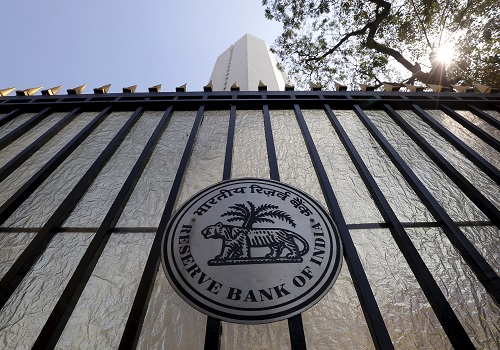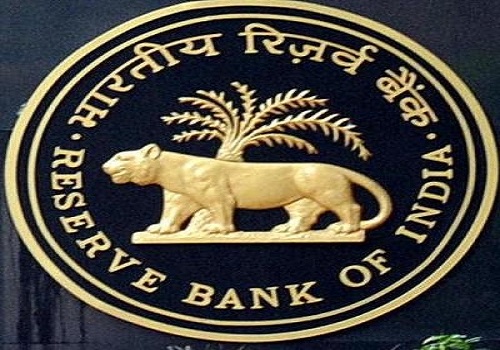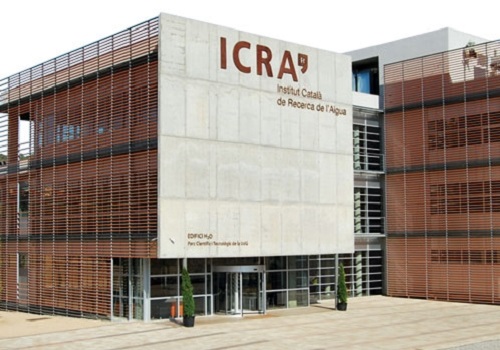Naturalgas trading range for the day is 199.2-213 - Kedia Advisory

Follow us Now on Telegram ! Get daily 10 - 12 important updates on Business, Finance and Investment. Join our Telegram Channel
Gold
Gold prices rose by 0.72% to settle at 62954, driven by data from the US that reinforced expectations of early monetary easing by the Federal Reserve in 2024. The unexpected decline of 0.1% in US PCE prices in November, coupled with a 0.1% increase in core prices, defied market forecasts and solidified expectations for the first rate cut by the Fed in March. US economic concerns were further underscored by a sharp decline of 12.2% in sales of new single-family houses in November, reaching the lowest point since April 2022. Despite a notable decrease in mortgage rates and a rebound in mortgage demand, the real estate sector faced significant challenges. In India, physical gold demand experienced a sharp decline due to elevated domestic prices, leading dealers to offer steeper discounts. Other Asian hubs reported subdued bids, with the exception of China, where premiums rose to $34-$41 per ounce over global spot prices, up from $20-$40 in the previous week. From a technical perspective, the market observed fresh buying with a 4.9% increase in open interest, settling at 15790. Gold is currently finding support at 62675, and a breach below could test 62385 levels. On the upside, resistance is likely at 63265, and a move above could propel prices toward 63565.
Trading Ideas:
* Gold trading range for the day is 62385-63565.
* Gold rose as latest US data supported bets of early monetary easing by the Fed in 2024.
* US PCE prices unexpectedly declined by 0.1% mom in November, contrary to market forecasts of a flat reading.
* Coupled with the previous revision of the country's Q3 GDP, the readings solidified hopes for the first rate cut by the Fed in March.
Silver
Silver prices experienced a marginal decline of -0.05%, settling at 75386, primarily driven by profit booking. The market had earlier witnessed an upward trend due to a weakened dollar and lower yields, fueled by expectations of the Federal Reserve initiating a rate-cutting cycle in March. The latest US data reinforced the belief in the Fed's potential rate-cutting strategy, as both headline and core PCE price indices for November fell below estimates. The US inflation data suggested a gradual convergence toward the Fed's target, with year-ahead inflation expectations reaching a near three-year low of 3.1% in December 2023. Factors such as falling energy prices and the impact of interest rate hikes contributed to the decline. Despite the decline in mortgage rates, sales of new single-family houses in the US recorded a sharp drop of 12.2% in November, marking the steepest decline since April 2022. This unexpected development occurred even with a notable rebound in mortgage demand, indicating challenges in the real estate sector. Silver prices continue to find support from a supply-demand imbalance, with demand consistently outpacing supply. The silver market is expected to face a deficit of 140 million ounces (4354 tonnes) in 2023, reinforcing the positive outlook for prices. From a technical standpoint, the market observed fresh selling, with a 0.99% increase in open interest, settling at 15,122. Silver is currently finding support at 74995, and a breach below could test 74605 levels. On the upside, resistance is likely at 75910, and a move above could propel prices toward 76435.
Trading Ideas:
* Silver trading range for the day is 74605-76435.
* Silver pared gains on profit booking after prices rose amid weakened dollar and lower yields
* The latest data from the US strengthened beliefs that Fed would begin its rate cutting cycle next March.
* Both headline and core PCE price indices in the US came below estimates in November
Crude oil
Crude oil prices rose by 0.47% to settle at $61.63 as tensions escalated in the Middle East due to Houthi attacks on ships in the Red Sea. The situation raised concerns about potential disruptions to oil supplies. However, Angola's decision to exit OPEC introduced uncertainty regarding the group's ability to effectively support oil prices. The ongoing attacks on vessels in the Red Sea by the Houthi militant group, in response to perceived Israeli actions in Gaza, prompted more maritime carriers to avoid the region. This geopolitical tension contributed to the upward movement in oil prices. In contrast, the latest data from the Energy Information Administration (EIA) revealed that U.S. crude oil production reached a record 13.3 million barrels per day, adding 200,000 bpd from the previous week. The report also indicated an unexpected increase in crude inventories by 2.9 million barrels, contrary to market expectations of a 2.3 million-barrel decline. Additionally, crude stocks at the Cushing, Oklahoma delivery hub rose by 1.7 million barrels. Despite the rise in crude stocks, refinery crude runs increased by 403,000 barrels per day, accompanied by a 2.2% rise in refinery utilization rates. Gasoline stocks in the U.S. climbed by 2.7 million barrels, exceeding the anticipated 1.2 million-barrel increase. From a technical perspective, the market witnessed short covering, with a 3.64% drop in open interest, settling at 11,552. Crude oil finds support at 6111, and a breach below could test 6058 levels. On the upside, resistance is likely at 6232, with a move above potentially leading to prices testing 6300.
Trading Ideas:
* Crudeoil trading range for the day is 6058-6300.
* Crude oil rose as tensions persisted in the Middle East following Houthi attacks on ships in the Red Sea
* Although Angola's decision to leave OPEC raised questions over the group's effectiveness in supporting prices.
* U.S. crude output rises to record 13.3 million bpd – EIA
Natural gas
Natural gas prices posted a modest gain of 0.24%, settling at 207.5, driven by forecasts of much colder weather in January and heightened heating demand, coupled with record gas flows to U.S. liquefied natural gas (LNG) export facilities. This upward movement occurred despite record gas output and relatively mild weather, allowing utilities to draw less gas from storage. The surge in natural gas prices comes amid anticipation of colder weather in January, boosting heating demand. Despite record production levels and ample gas supplies in storage, traders have been closely monitoring the impact of weather patterns on market dynamics. Average gas output in the lower 48 U.S. states reached 108.6 billion cubic feet per day (bcfd) in December, up from the previous record of 108.3 bcfd in November. Weather projections suggest a warmer-than-normal trend through December 30, with expectations of a shift to colder-than-normal conditions from December 31 to January 6. U.S. pipeline exports to Mexico decreased to an average of 4.2 bcfd in December, down from 5.6 bcfd in November. Meanwhile, gas flows to major U.S. LNG export plants increased to an average of 14.6 bcfd in December, surpassing the previous record of 14.3 bcfd in November. From a technical standpoint, the market witnessed fresh buying, with a 4.26% increase in open interest, settling at 27,070. Natural gas is finding support at 203.4, and a break below could test 199.2 levels. On the upside, resistance is likely at 210.3, and a move above could see prices testing 213.
Trading Ideas:
* Naturalgas trading range for the day is 199.2-213.
* Natural gas gains on forecasts for much colder weather and higher heating demand in January
* Support also seen amid record amounts of gas flow to U.S. liquefied natural gas (LNG) export plants.
* Average gas output in the lower 48 U.S. states rose to 108.6 bcfd so far in December from a record 108.3 bcfd in November.
Copper
Copper prices experienced a marginal decline of -0.14%, settling at 732.55, amid a mix of factors influencing the market. Expectations of Chinese economic policy support provided initial support, but concerns about supply disruptions due to shipping constraints in the Red Sea contributed to the overall market sentiment. The International Copper Study Group (ICSG) reported a refined copper market deficit of 53,000 metric tons in October, a slight improvement from the 56,000 metric tons deficit in September. World refined copper output for October reached 2.34 million metric tons, while consumption was 2.39 million metric tons. When accounting for changes in inventory in Chinese bonded warehouses, the deficit in October was 52,000 metric tons, compared to 62,000 metric tons in September. Several supply-side issues further impacted the copper market. The suspension of activities at the Cobre Panama mine, responsible for 1.5% of the world's copper supply, due to disputes with the Panamanian government, added pressure. Additionally, strikes at the Las Bambas mine in Peru and threats of activity suspension in BHP's Chilean mines contributed to concerns about supply disruptions. Technically, the market witnessed fresh selling, with a 19.42% increase in open interest, settling at 4,993. Copper is finding support at 730.9, and a break below could test 729.1 levels. Resistance is likely at 735.3, and a move above could see prices testing 737.9. The market dynamics reflect a delicate balance between economic factors, supply concerns, and long-term demand expectations.
Trading Ideas:
* Copper trading range for the day is 729.1-737.9.
* Copper settled flat after support seen helped by expectations of Chinese economic policy support
* Copper market in 53,000 metric tons deficit in Oct 2023 – ICSG
* Copper inventories in warehouses monitored by the Shanghai Futures Exchange fell 16.5% from last Friday.
Zinc
Zinc prices surged by 1.44%, settling at 228.95, driven by factors such as a decline in China's refined zinc output and easing of the global zinc market deficit. In November 2023, China's refined zinc output dropped by 4.23% month-on-month to 579,000 mt. Despite this monthly decrease, the year-on-year increase stood at 10.62%, totaling around 6.03 million mt from January to November. Notably, domestic zinc alloy output in November was 93,300 mt, down 4,800 mt from the previous month, attributed to production halts and overhauls in smelters in Shaanxi, Hunan, and Yunnan. The global zinc market deficit decreased to 52,500 metric tons in October from 62,000 tons in September, as reported by the International Lead and Zinc Study Group (ILZSG). For the first 10 months of 2023, the ILZSG data indicated a surplus of 295,000 tons, a notable contrast to the deficit of 33,000 tons in the same period of 2022. China's strong industrial production growth in November, with a 6.6% year-on-year increase, contributed to the positive sentiment in the zinc market. This growth follows a 4.6% gain in the previous month and exceeded market forecasts of 5.6%. Technically, the market is under fresh buying, with a 26.31% increase in open interest, settling at 4,662. Zinc is currently finding support at 226.9, with a potential test of 224.7 levels. On the upside, resistance is likely at 230.3, and a move above could see prices testing 231.5. The combination of supply dynamics and robust industrial production in China is supporting the bullish momentum in the zinc market.
Trading Ideas:
* Zinc trading range for the day is 224.7-231.5.
* Zinc prices gained as China's refined zinc output dropped 4.23% month on month in November.
* The global zinc market deficit eased to 52,500 metric tons in October from a deficit of 62,000 tons in September
* China, registered accelerating growth in its industrial output for November
Aluminium
Aluminium prices surged by 2.56% to settle at 208.7, driven by supply concerns following a fuel depot blast in Guinea, a major raw material producer. The explosion raised fears of a shortage of bauxite, a key feed material for alumina, an intermediary product for aluminium. Chinese alumina futures reached record highs, and buying by Commodity Trade Advisor (CTA) investment funds, primarily computer-driven, also supported the gains. In China, the Big Five banks announced interest rate cuts on some deposits, seen as an effort to pave the way for further policy rate reductions to support the economy. Additionally, maritime carriers avoiding the Red Sea due to vessel attacks by the Yemeni Houthi militant group disrupted trade routes through the Suez Canal, accounting for about 12% of global trade. Aluminium inventories in Shanghai Futures Exchange-monitored warehouses decreased by 8.8% from the previous week. Global primary aluminium output in November rose by 2.7% year-on-year to 5.893 million tonnes, according to data from the International Aluminium Institute (IAI). Technically, the market is under fresh buying, with a 16.02% increase in open interest to settle at 3,903. Aluminium finds support at 205.4, with potential testing of 202 levels. On the upside, resistance is likely at 210.6, and a move above could see prices testing 212.4. The combination of supply concerns, geopolitical disruptions, and strong demand signals from China contributes to the bullish momentum in the aluminium market.
Trading Ideas:
* Aluminium trading range for the day is 202-212.4.
* Aluminium rose due to supply concerns after a fuel depot blast in major raw material producer Guinea.
* The blast at an oil terminal in major bauxite supplier Guinea sparked fears of a shortage of the feed material for alumina.
* Aluminium inventories in warehouses monitored by the Shanghai Futures Exchange fell 8.8% from last Friday.
Cotton
Cotton prices, represented by Cottoncandy, closed up by 0.75% at 56,120, driven by the Cotton Association of India (CAI) maintaining its pressing estimate for the 2023-24 season at 294.10 lakh bales of 170 kg each. CAI President Atul S Ganatra noted that the total supply till the end of November was estimated at 92.05 lakh bales, consisting of market arrivals, imports, and opening stocks. Reports of a decline in pink bollworm infestation in the cotton crop have provided some relief. The infestation has reduced from 30.62% during 2017-18 to 10.80% in 2022-23. However, infestation is still observed in cotton-growing areas across the country. Certified cotton stocks, deliverable against contracts, dropped significantly from their highest level in over two years on December 1st to 6,325 bales on December 5th, according to ICE data. The International Cotton Advisory Committee (ICAC) projected that global cotton production is expected to outpace consumption for the second consecutive year. Global cotton lint production is forecasted to grow by 3.25% year-on-year to 25.4 million metric tons in the 2023-2024 season, while consumption is expected to marginally decline to 23.4 million metric tons. The U.S. cotton balance sheet for 2023/24 indicates slightly lower consumption but higher production and ending stocks. Global cotton balance sheets include lower consumption but higher production and stocks. Ending stocks are projected to be 3.2 million bales, accounting for 22.5% of use. Technically, the market is under fresh buying, with a gain in open interest by 6.84% to 203. Cottoncandy is currently finding support at 55,940, with potential testing of 55,750. On the upside, resistance is likely at 56,280, and a move above could see prices testing 56,430.
Trading Ideas:
* Cottoncandy trading range for the day is 55750-56430.
* Cotton gains as CAI has maintained its pressing estimate for the 2023-24 season at 294.10 lakh bales
* Total supply till end November was estimated at 92.05 lakh bales, which consisted market arrivals of 60.15 lakh bales
* ICAC projected that global cotton production will likely outpace consumption for the second year in a row.
* In Rajkot, a major spot market, the price ended at 26166.8 Rupees dropped by -0.05 percent.
Turmeric
Turmeric prices experienced a notable uptick, closing up by 1.78% at 14,214, driven by the potential for yield losses due to unfavorable weather conditions. Improved export opportunities also contributed to the bullish trend. However, the upside is limited as buying activities have been slower in anticipation of stock releases ahead of the commencement of new crops in January 2024. Pressure on prices is also observed due to favorable crop conditions supported by conducive weather. The location of PM Modi's Turmeric Board in Telangana has sparked concerns among farmers in Maharashtra. The crop condition is reported as satisfactory, and harvest is expected during the January to March period. Current levels of buying activity and decreasing supplies are factors that will likely sustain price stability. While demand for turmeric has increased both in developed and emerging nations, exports during April to October 2023 rose by 2.63% to 1,02,162.94 tonnes compared to the same period in 2022. In October 2023, turmeric exports saw a gain of 11.58% compared to September 2023, but a decline of 9.30% compared to October 2022. Expectations of a 20–25% decline in turmeric seeding this year, particularly in areas like Maharashtra, Tamil Nadu, Andhra Pradesh, and Telangana, reflect shifting priorities among farmers. Technically, the market is undergoing short covering, with a drop in open interest by -1.21% to 11,795. Turmeric is currently finding support at 13,952, and a breach below could lead to a test of 13,692. On the upside, resistance is anticipated at 14,410, and a move above could see prices testing 14,608.
Trading Ideas:
* Turmeric trading range for the day is 13692-14608.
* Turmeric gains as shrinking supplies in the market supporting prices.
* Arrivals have been tighter and likely to remain down that is likely to support firmness in prices.
* Support also seen due to reduced production projections.
* In Nizamabad, a major spot market, the price ended at 13233.15 Rupees dropped by -0.37 percent.
Jeera
Jeera prices recorded a modest uptick, closing up by 0.63% at 38,140, driven by low-level buying after a recent drop attributed to higher production prospects in Gujarat and Rajasthan. The market is under pressure due to aggressive sowing of Jeera in Gujarat and sluggish export demand. Sowing activities have progressed smoothly thanks to favorable weather conditions, resulting in a significant increase in the sown area in both Gujarat and Rajasthan compared to the previous year. In Gujarat, Jeera sowing experienced remarkable growth, surging by nearly 103% to 530,030 hectares compared to 261,635 hectares in 2022. Meanwhile, Rajasthan saw a 13% increase in cumin sowing, reaching 6.32 lakh hectares. Global demand for Indian Jeera has declined as buyers are favoring other origins like Syria and Turkey due to the relatively higher prices in India. The two-and-a-half-times increase in Gujarat's cumin sowing and the overall rise in production have kept prices under pressure. In October 2023, Jeera exports declined by 13.39% compared to September 2023 and by 46.77% compared to October 2022. The export outlook remains subdued in the upcoming months, considering the seasonality of exports. Technically, the market is undergoing short covering, with a drop in open interest by -1.15% to 3,090. Jeera is currently finding support at 37,720, and a breach below could lead to a test of 37,310. On the upside, resistance is anticipated at 38,510, and a move above could see prices testing 38,890.
Trading Ideas:
* Jeera trading range for the day is 37310-38890.
* Jeera gains on low level buying after prices dropped due to higher production prospects
* In Gujarat, Cumin sowing witnessed very strong growth by nearly 103% with 530,030.00 hectares against sown area of 2022
* Stockists are showing interest in buying on recent downfall in prices triggering short covering.
* In Unjha, a major spot market, the price ended at 38500.9 Rupees gained by 0.55 percent.












 320-x-100_uti_gold.jpg" alt="Advertisement">
320-x-100_uti_gold.jpg" alt="Advertisement">








